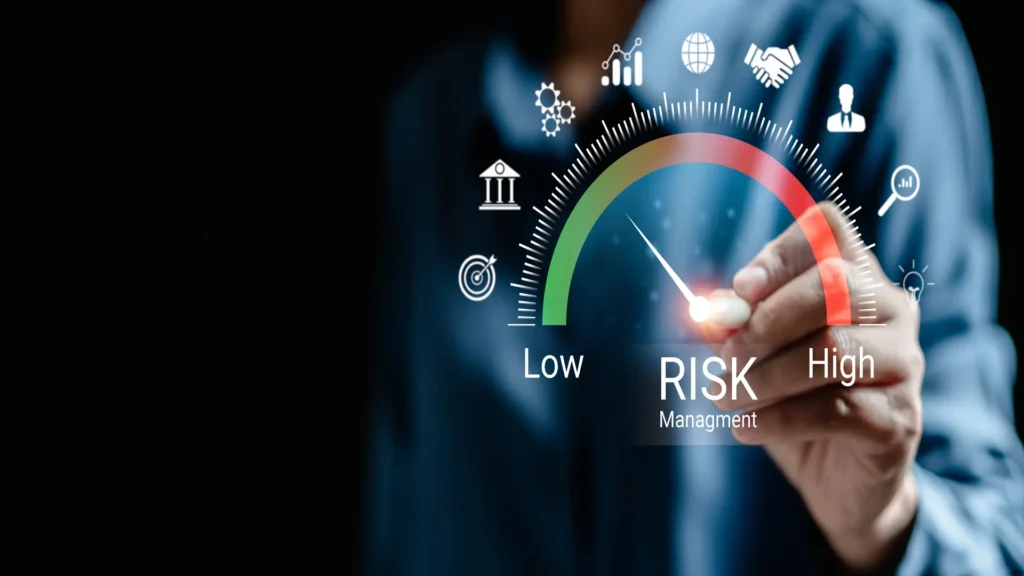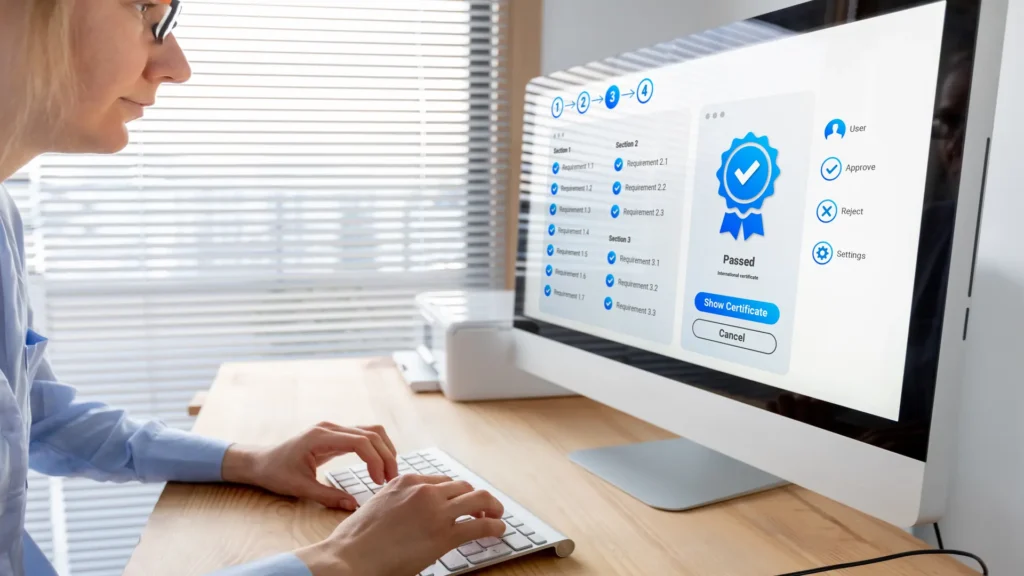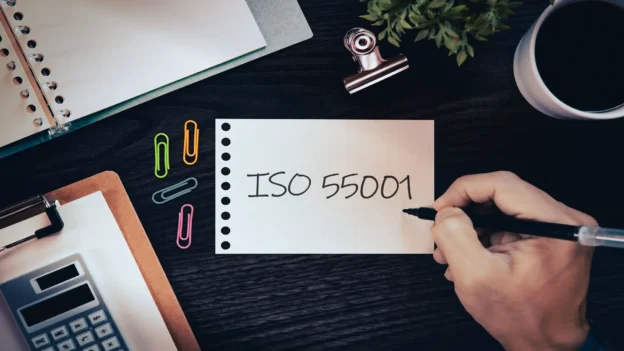Table of Contents
- Differences between ISO 55000, 55001, and 55002
- Key changes: 2014 vs. 2024
- Impact on Asset Management
- Key points of the ISO 55001:2024 update
- How is a transition audit to ISO 55001 performed?
- Regulatory scrutiny according to ISO 55001
- ISO 55001 As a brilliant strategy
- Determining the scope of the asset management system
- Typical improvements following the integration of ISO 55001
- Conclusions
- References
In an increasingly competitive and sustainability-oriented industrial environment, ISO 55001:2024 physical asset management has evolved towards a comprehensive approach, standardizing and aligning with the organization’s strategic objectives.
The new edition of ISO 55001:2024 introduces significant adjustments that not only update the technical requirements but also align the standard with trends such as digitization, ESG criteria, and integration with corporate strategic objectives. Companies will need to prepare for change and adapt their asset management systems to comply with the new requirements and transition times if they have not yet implemented them.
This article provides a very general overview of the changes between the 2014 and 2024 versions of ISO 55001 (the asset management standard).
Differences between ISO 55000, 55001, and 55002
Before getting into the comparison, it is worth remembering that asset management within the ISO framework is based on three documents:
- ISO 55000: Establishes the fundamentals, definitions, and key principles of asset management.
- ISO 55001: Specifies the requirements for implementing an asset management system.
- ISO 55002: Provides practical guidelines for effectively applying ISO 55001.
Key changes: 2014 vs. 2024
The 2024 update maintains the main structure but introduces improvements focused on strategic integration, sustainability, and intensive use of data. Among the most relevant changes are:
| Scope | ISO 55001:2014 | ISO 55001:2024 |
|---|---|---|
| Strategic Approach | General alignment with the organization’s objectives. | Requires evidence that asset-related decisions are justified by their direct contribution to strategic goals and business outcomes. |
| Sustainability (ESG) | Implicit references to environmental and social aspects. | Explicit inclusion of ESG criteria in asset management, considering environmental impact, occupational safety, and transparency. |
| Risk Management | General framework for identifying and assessing risks. | More robust approach: prioritization based on criticality, probability, and failure cost, integrating methodologies such as RCM and RBI. |
| Data and Digitalization | Traditional indicators and documented records. | Intensive use of real-time data (IoT, digital twins, predictive analytics) to make condition- and performance-based decisions. |
| Leadership and Governance | Leadership implicitly embedded in AMS implementation. | Stricter requirements: top management must demonstrate active commitment, resource allocation, and validation of decision-making criteria. |
| Life Cycle | Consideration of the complete life cycle as a general principle. | Detailed planning from acquisition to disposal, with metrics to measure the value generated throughout the cycle. |
Impact on Asset Management
The 2024 version transforms the way assets are planned, operated, and maintained:
a) Full life cycle management
The standard requires a comprehensive analysis from planning and acquisition to final disposal, optimizing ownership costs, availability, and useful life.
b) Risk-Based Prioritization
The basis of the ISO 55000 system is risk management, as the foundation for decision-making with clear risk and benefit criteria, using recognized methodologies such as RCM (Reliability-Centered Maintenance) and RBI (Risk-Based Inspection).
c) Integration of ESG criteria
The SGA must incorporate actions that reduce environmental impact and promote operational sustainability, improve workplace safety, and increase corporate transparency.
d) Advanced use of data
Digitization enables real-time condition monitoring (CBM), performance evaluation with KPIs (OEE, MTBF), and informed data-driven decision-making. Predictive analytics drives intelligent maintenance. Digitized technologies include:
- IoT sensors for real-time monitoring.
- Digital twins to simulate scenarios and optimize strategies.
- Predictive analytics to anticipate failures and optimize maintenance
e) Active leadership
Senior management must demonstrate leadership and commitment to the asset management system by ensuring that the asset management policy, the scope of the asset management system, the strategic asset management plan (SAMP), and the asset management objectives are established. This is compatible with the organization’s strategic direction and organizational objectives. They must demonstrate leadership and commitment to the asset management system by:

Applied example: Centrifugal compressors in natural gas plants
In the oil and gas sector, centrifugal compressors are critical assets for the transportation and processing of natural gas. Under the framework of ISO 55001:2024, their management can be structured as follows:
1. Life cycle assessment: From technical specifications in procurement, installation, and operation to disposal or modernization.
2. Risk analysis: Identification of critical units considering service severity, historical availability, and replacement cost.
3. Smart monitoring: IoT sensors to measure vibration, temperature, and pressure, connected to a CMMS system and digital twin models.
4. Strategic decision-making: Maintenance or renovation plans aligned with production strategy, emissions reduction, and ESG objectives.
Observed results: By implementing this approach, some plants have managed to increase the availability of key equipment to over 98%, reduce unscheduled downtime, and extend intervals between major overhauls.
Key points of the ISO 55001:2024 update
The ISO 55001:2024 standard sets a benchmark in asset management, incorporating significant improvements over the previous ISO 55001:2014 standard. These updates reflect new market demands, digital transformation, and sustainability criteria.
In a context where equipment uptime, safety performance, and regulatory scrutiny can significantly influence profit margins, the ISO 55001 standard has become the global guide for asset-intensive organizations.
The standard codifies a management system approach that treats physical assets not as isolated machines, but as value-generating portfolios directly linked to the organization’s objectives.
Therefore, the integration of ISO 55001 is not merely a regulatory compliance strategy; it is a strategy that sharpens senior management, optimizes capital efficiency, and builds credibility with investors, regulators, and employees.
How is a transition audit to ISO 55001 performed?
- All organizations must perform a transition audit to confirm implementation of the new standard. The transition audit can be performed in conjunction with an existing audit or it can be a standalone audit.
- If the transition audit is conducted in conjunction with a follow-up audit (i.e., transition follow-up) or recertification audit (i.e., transition reassessment), additional time will be added to the audit duration to cover the new requirements introduced by ISO 55001:2024.
- If a separate audit is conducted for the transition audit, the duration will be calculated individually for each organization.

Regulatory scrutiny according to ISO 55001
Regulatory scrutiny within the framework of the ISO 55001 standard represents a set of systematic activities for evaluating, verifying, and ensuring the performance of the Asset Management System (AMS). The aim is to guarantee its compliance with both the requirements of the standard and applicable laws and regulations.
This scrutiny can be internal (internal audits) or external (certification or regulatory audits) and takes a comprehensive approach to the following critical aspects:
Areas of assessment
- SGA compliance: Determines whether the asset management system complies with the structure, principles, and technical requirements defined by ISO 55001.
- Regulatory compliance: Adherence to laws, industry regulations, and technical standards related to the operation, maintenance, and disposal of physical assets is verified.
- Review of policies and processes: Organizational policies, operating procedures, and control mechanisms are audited, evaluating their alignment with strategic asset management objectives.
- Documentation and traceability: The integrity, traceability, and sufficiency of records supporting the implementation and effectiveness of the SGA are validated.
- Continuous improvement: The existence of systematic mechanisms (PDCA cycle) for the continuous improvement of the management system’s performance is examined.
Technical objectives of regulatory scrutiny
- Optimize asset performance: Ensures that assets generate sustainable value throughout their lifecycle.
- Control operational and financial risks: Facilitates the proactive identification and mitigation of risks related to failures, obsolescence, or legal non-compliance.
- Support data-driven decision-making: Provides structured evidence for strategic decisions on investment, replacement, or renewal of assets.
- Strengthen stakeholder confidence: Demonstrates transparency, management maturity, and commitment to operational excellence.
- Avoid penalties and ensure compliance: Reduces exposure to fines, penalties, or loss of licenses due to regulatory non-compliance.
ISO 55001 As a brilliant strategy
Most companies become familiar with ISO 55001 through legislation, pressure from insurance companies, or customer audits.
The tendency is to view certification as a simple requirement. However, the true power of the standard lies in how it forces boards of directors to align asset decisions with business value.
Clause 4, for example, requires explicit alignment between asset management objectives and business strategy.
Clause 8 goes further, requiring a risk-based and life-cycle cost planning approach, a discipline that systematically reduces total expenditure by 10% to 20% when applied correctly.
Risk vs. Capital
Consolidated ISO 55001 programs generate risk records with abundant information that classify interventions by consequence and probability, not by departmental policies. Capital budgets that previously included 30% “risk contingencies” can be cut because uncertainty is now quantified.
Practical example: At a medium-sized water utility, adopting the ISO 55001 risk matrix enabled planners to defer $45 million in low-value renovations while accelerating $12 million in high-risk main pipe replacements, reducing anticipated service interruption penalties by 60%.
Concept of comprehensive life cycle
Traditional maintenance organizations primarily optimize operating expenses (OPEX), hoping that capital expenses (CAPEX) will subsequently manage themselves.
The lifecycle perspective of ISO 55001 requires a holistic view: design decisions influence maintenance costs; operational profiles influence disposal liabilities.
When accounting for these interactions, companies often find that a moderate increase in preventive spending can extend the useful life of assets, thereby eliminating future capital spikes.
Determining the scope of the asset management system
The organization must establish and apply a framework for asset management decision-making that is appropriate to the type, size, and complexity of the organization. This decision-making framework should be used to:
- Define and determine the value that the organization intends to obtain from its assets through the application of the asset management system.
- Define the criteria that will be used in asset management decision-making to achieve the determined value.
- When establishing and implementing the framework, the organization shall take into account:
- The context of the organization, its objectives, and external and internal issues;.
- The requirements of interested parties.
- The scope of the asset management system, which determines the set of decisions to be made about assets, asset management, and the asset management system itself.
Application of continuous improvement
1. Baseline Deficiency Assessment: Map existing processes to the 7 clauses and 39 sub-clauses of the ISO 55001 standard. An IAM-certified consultant brings rigor and repeatability to this phase, ensuring that findings will stand up to auditor scrutiny and board review.
2. Leadership Alignment: The standard has a high level of accountability by design. Establish senior management forums where asset management objectives are discussed alongside financial and market KPIs.
3. Process Harmonization: Streamline disparate work order flows, condition assessment methods, and data taxonomies into a single auditable framework.
4. Information and technology: Implement analytics that convert raw condition data into risk-weighted renewal recommendations; connect to the ERP system so that cost signals are immediate.
5. Capacity improvement: ISO 55001 requires competency matrices and continuous professional development (CPD) tracking. Invest in interdisciplinary training that integrates engineering, finance, and risk language.
6. Assurance and review: Develop an internal audit cycle and external reviews every 3 to 5 years. Use non-conformities as raw material for a real-time improvement log, not as post-hoc documentation.
Mistakes that should not be repeated.
Rushing to create procedures without cultural acceptance results in dust-collecting folders and failed audits when people cannot articulate the process.
Installing sensors without a risk-based analysis plan only floods control panels. Start with criticality mapping; instrument as appropriate.
ISO 55001 advocates proportionality; implement high-value clauses (risk framework, life cycle cost) first before tackling secondary processes.
Typical improvements following the integration of ISO 55001
The following table summarizes the benefits observed in industrial organizations that have integrated ISO 55001 into their asset management systems. These data represent typical improvements in key areas, supported by industry studies and references.
| Impact Area | Typical Improvement After ISO 55001 Integration | Evidence or Reference |
|---|---|---|
| Unplanned downtime | ↓ 20–40% | Multiple heavy industry references |
| Lifecycle CAPEX | ↓ 5–15% | Water and energy utilities after closing gaps |
| Regulatory non-compliance | ↓ 50% in findings | Data from oil and gas pipeline operators |
| Insurance premiums | Stable or ↓ 5% | International study on asset risk by insurers |
| Staff engagement | ↑ Measurable | Internal surveys citing “clarity in priorities” |
Conclusions
The integration of ISO 55001 is not a simple certification process; it is a catalyst for business strategy. Companies that adopt its risk-based and life-cycle cost approach achieve more accurate senior management, greater capital efficiency, and increased stakeholder confidence.
The process requires disciplined change management and reliable, trustworthy external verification, but the benefits, both operational and financial, accumulate year after year. Regulatory scrutiny under ISO 55001 is not just a formal requirement, but a key component of asset governance.
Its proper implementation strengthens organizational resilience, promotes technical management based on international standards, and aligns operational objectives with the current regulatory framework.

